Expedition 47 Preview
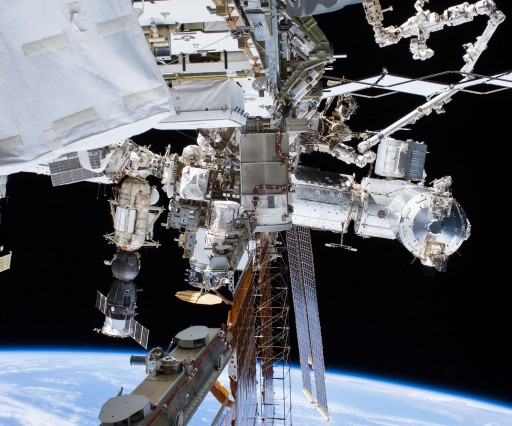
The 47th Expedition to the International Space Station is a three-month station increment highlighted by the return to flight of the American cargo vehicles to the Space Station – the SpaceX Dragon coming back after a June 2015 Falcon 9 launch failure and Orbital ATK’s Cygnus, launching for the first time on the upgraded Antares rocket following a dramatic failure in 2014.
Staffed by a crew of six, ISS will continue a busy science program with well over 200 active studies in the various laboratory modules of the complex, spanning across all areas of scientific research.
Expedition 47 has a rather packed schedule with multiple visiting vehicle arrivals and departures and the installation of a new temporary module on the U.S. segment of the station. Spacewalks are also planned for Expedition 47 to continue the outfitting of external systems for the first commercial crew missions, expected to arrive at ISS in the coming years.
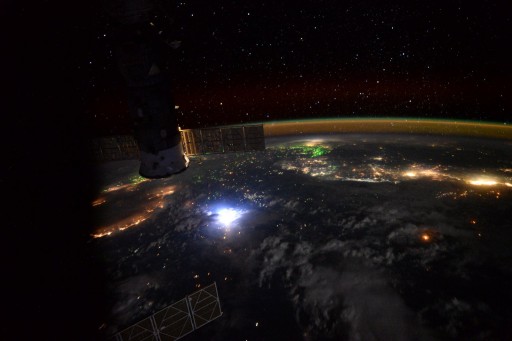
Expedition 47 begins with the departure of Soyuz TMA-18M on March 2, 2016 bringing Sergei Volkov back to Earth after a half-year mission and returning Scott Kelly and Mikhail Kornienko after their one-year ISS mission, spanning four increments to advance data collected during prolonged exposure to microgravity to shed light on the mechanisms behind the negative effects crews are faced with when spending an extended period of time in space.
The three-crew operation phase in between Soyuz missions will be two weeks in duration with ISS staffed by Russian Cosmonaut Yuri Malenchenko and Astronauts Tim Peake and Tim Kopra, ISS Expedition 47 commander. Soyuz TMA-20M, the final Soyuz TMA-M spacecraft to fly, will arrive at ISS in the night of March 18/19 to top up the Station’s crew at six to head into three busy months.
Expedition 47 is planned to see up to six visiting vehicle arrivals, starting with the docking of Soyuz TMA-20M. Next up will be the Orbital ATK Cygnus OA-6 mission, the second of two Cygnus missions launching on Atlas V rockets to bridge the gap until the new Antares 200 series is ready for its debut. Following the arrival of Cygnus, the Russian crew will see off the Progress M-29M spacecraft at the end of March, making room for Progress MS-2 set for liftoff and an express docking on March 31st.
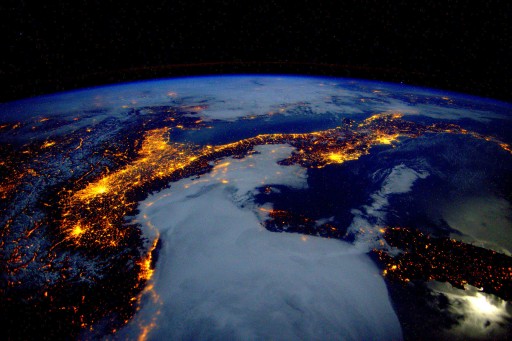
In April, SpaceX will return to the Space Station with the Dragon SpX-8 mission, coming back from last year’s Falcon 9 launch failure that claimed the loss of the Dragon SpX-7 spacecraft.
Throughout Expedition 47, the majority of the crew’s time will be dedicated to science operations, supporting over 200 studies ongoing aboard the orbiting laboratory. Science supported by the Space Station spans across all branches from Earth and Space Science over physical science, technology demonstrations, biology, biotechnology, chemistry and human research to educational activities and student-run experiments.
One particular area of interest is human research, taking advantage of the environment aboard ISS to study changes undergone by the human body down to a cellular and biochemical level when being exposed to the space environment for an extended period of time to identify the underlying mechanisms of phenomena such as bone and muscle loss as well as immune system changes, changes to the fluid distribution within the human body and a series of other phenomena.
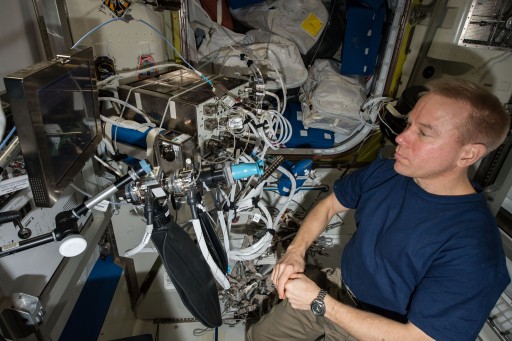
One major item is the collection of information needed for the development of countermeasures that will be used to limit the negative effects such as degradation of bone and muscle mass seen today so that humans can stay in space for long missions of up to several years.
To complete these studies, the crew of ISS will serve as test subjects themselves – performing regular sampling activities, tests of their cognitive abilities and a range of other tests, also looking at psychological aspects.
Expedition 47 will end in early June with the departure of Soyuz TMA-19M with Yuri Malenchenko, Tim Kopra and Tim Peake, returning to Earth after a seven-month mission that had been extended by one month to accommodate slight shifts in Soyuz schedules due to delays with the improved Soyuz MS variant, set to fly for the first time on June 20, 2016.
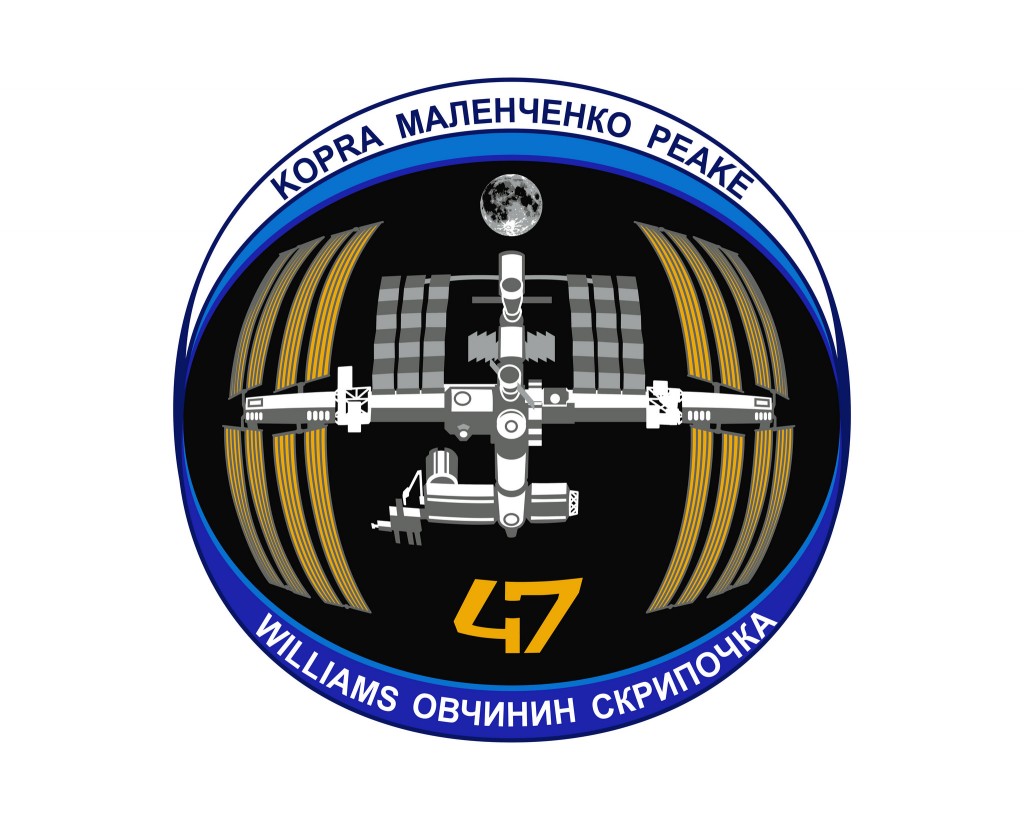
Expedition 47 Crew
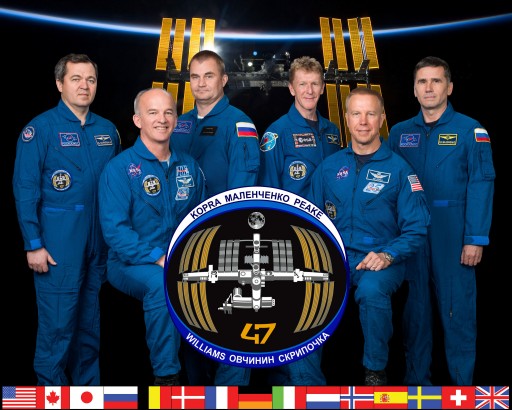
The crew of International space Station Expedition 47 is comprised of very experienced space fliers with one or more previous flights to space as well as rookies completing their first long-duration mission to space.
Expedition 47 is commanded by U.S. Astronaut Tim Kopra who is joined on the U.S. Segment by ESA Astronaut Tim Peake and Station veteran Jeff Williams who returns to ISS six years after his last mission. The Russian Segment will be staffed by Segment Commander Yuri Malenchenko making his sixth space flight, and Flight Engineers Alexey Ovchinin and Oleg Skripochka.
Yuri Malenchenko already ranks in the Top 10 of Cosmonauts with the most time spent in space, having made five prior long-duration missions in an accomplished career. Selected as a Cosmonaut in 1987, Malenchenko flew for the first time in 1994 to the Mir Space Station for a half-year mission. Transitioning to the ISS program, he was part of Space Shuttle Mission STS-106 that prepared ISS for permanent inhabitation. He conducted four Expedition missions to the Space Station for Expedition 7, 16 and 32/33, also amassing 30 hours of spacewalking time. Overall, Malenchenko logged 641 days in space and will reach 814 days at the end of his flight, placing him second in the all-time list after record-holder Gennady Padalka.
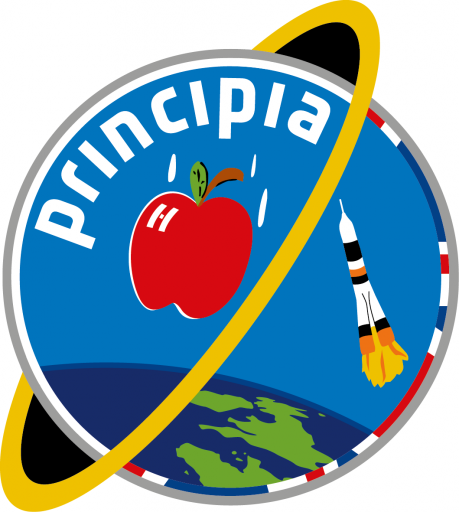
Tim Kopra comes from a military background, having served as a test and helicopter pilot instructor before he started working in the technical branch of NASA. He was selected as an Astronaut in 2000 and began training for a mission to ISS on the Space Shuttle. Kopra launched aboard Endeavour in 2009 and worked aboard ISS for nearly two months as part of Expedition 20, returning to Earth on Space Shuttle Discovery after a mission of 58 days. He was selected for Space Shuttle mission STS-133, but sustained an injury in a biking accident just weeks before launch.
Tim Peake is a European Space Agency Astronaut of British nationality. He had a military education and became a helicopter pilot and pilot instructor in the British military and as a test pilot in private industry. Over the course of his career, he logged 3,000 hours flying over 30 different types of aircraft. Peake was selected as an Astronaut in 2009 as part of six selected candidates and his flight assignment for Expedition 46/47 was announced in May 2013. Customary for ESA missions, Peake’s flight has its own designation – Principia.
Jeff Williams comes from a military background and also holds degrees in Aeronautical Engineering, having worked in the Space Shuttle Program in the late 1980s and early ‘90s. Over his 27-year military career as a test pilot, he flew over 50 different aircraft. Williams was selected by NASA in 1996 and flew for the first time on Space Shuttle Mission STS-101 in 2000, visiting ISS in its very early days when it only consisted of the Zarya and Node 1 modules. His second flight came in 2006 as part of Expedition 13, tasked with the continuation of ISS outfitting and utilization in a mission lasting 182 days. Williams completed his second long-duration mission to ISS in 2009/10 as part of Expedition 21/22, bringing his total time spent in space to 362 days.
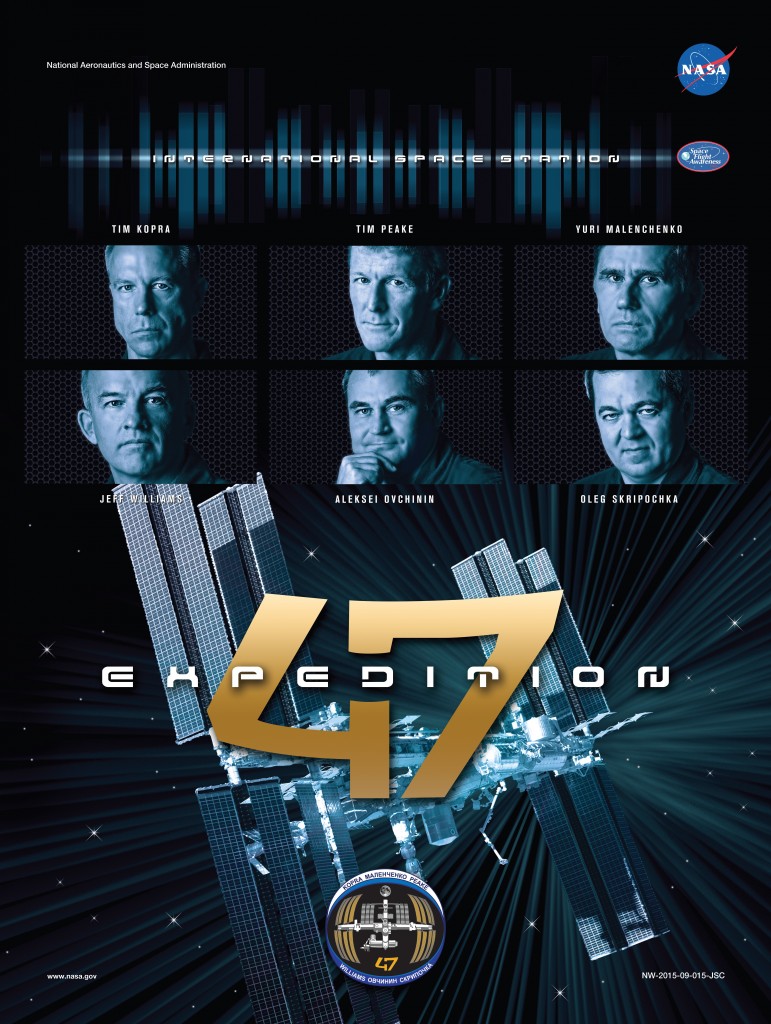
Oleg Skripochka is a veteran of one prior flight to the International Space Station. He started out as a mechanical engineer, working at rocket and spacecraft manufacturer Energia in support of ground systems and spacecraft development. Skripochka was selected as a Cosmonaut in 1997 and was assigned to multiple backup crews before finally receiving a flight assignment for the debut mission of the improved Soyuz TMA-M spacecraft. As part of ISS Expedition 25/26, Skripochka logged 159 days in space and completed three spacewalks for a total of 16 hours and 40 minutes.
Alexey Ovchinin is a former pilot and pilot instructor, serving in different military institutes and aviation regiments in the 1990s and 2000s, logging over 1,300 hours on the Yak-52 and L-39 aircraft. He was selected as a Cosmonaut candidate in 2006 and completed two years of basic training and evaluations before receiving his qualifications as a test Cosmonaut. He was first looking at a flight opportunity on Soyuz TMA-16M, but schedule changes due to the one-year ISS Expedition pushed his flight assignment to Soyuz TMA-20M and Expeditions 47 / 48 during which Ovchinin will serve as an ISS Flight Engineer.
Visiting Vehicles
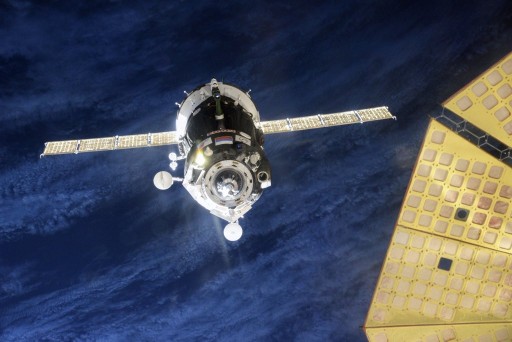
International Space Station Expedition 47 has a rather busy visiting vehicle schedule, highlighted by the return of the American ISS cargo resupply vehicles to the orbiting complex, coming back from launch vehicle failures in 2014 and 2015.
The formal start of Expedition 47 is marked by the departure of the Soyuz TMA-16M spacecraft in the night of March ½ to return to Earth with the two one-year crew members Scott Kelly and Mikhail Kornienko, coming back after 340 days in space, accompanied by their commander Sergei Volkov who closes out a 182-day ISS mission, his third. Following the departure of the Soyuz, ISS is staffed by a crew of three for the next two weeks, waiting for the arrival of the second half of the Expedition 47 crew.
Soyuz TMA-20M is the last in the TMA-M series of vehicles, making way for the improved Soyuz MS set for its first flight in the summer of 2016. Climbing aboard their Soyuz spacecraft, sitting atop a fully-fueled Soyuz FG rocket, Ovchinin, Skripochka and Williams will get a nine-minute ride into orbit to enter the expressway to ISS as part of a six-hour rendezvous.
The fast-track rendezvous profile requires the Soyuz to conduct four major rendezvous burns in the first two orbits of the mission so that the fully Automated Rendezvous Sequence can be initiated in the third orbit with docking one orbit later. Using its KURS Rendezvous System, the Soyuz will conduct a fully automated docking to the Rassvet Module to restore the Station’s crew to six.
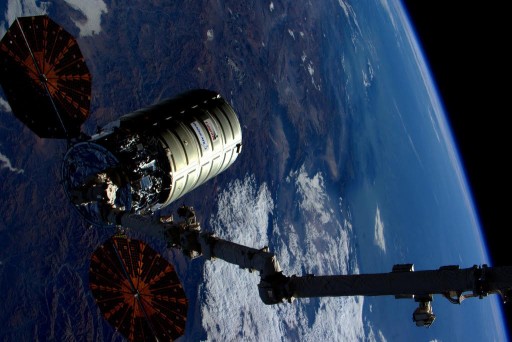
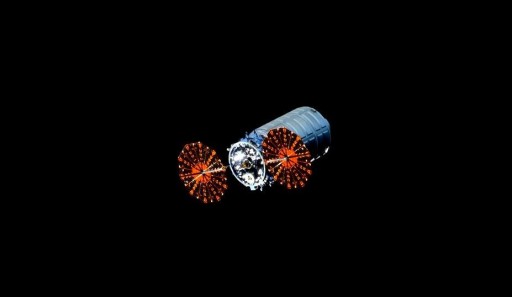
The joint Expedition 47 crew will get not much of a break since the first cargo vehicle will be inbound within one week of the Soyuz arrival.
Orbital ATK’s Cygnus OA-6 mission is the second of two interim missions of the Cygnus vehicle launching atop a United Launch Alliance Atlas V rocket. These two missions, the first completed from December through February, were contracted to ULA to bridge a gap required for repairs on the Wallops launch pad and to re-fit the Antares launch vehicle with new RD-181 engines in place of the heritage NK-33/AJ-26 engines that were identified as the main suspect in the October 2014 Antares launch failure.
With Cygnus launching atop the more powerful Atlas V rocket, Orbital ATK and NASA can fill the spacecraft up to the brink with cargo to make up for lost cargo upmass. Loaded with 3,500 Kilograms of supplies for ISS, Cygnus will launch from Florida’s Space Coast, aiming for a Low Earth Orbit from where it will begin a three-day climb to the orbiting outpost, approaching ISS from straight below to be grappled by the Station’s robotic arm for a berthing to the Unity Module – the start of a six-week stay.
In late March, the Russian crew members will oversee a Progress rotation beginning with the departure of the Progress M-29M spacecraft from the Zvezda Service Module of the Space Station on March 29 to vacate the docking port for the next Progress craft. M-29M will end its mission with a targeted re-entry after a short free flight.
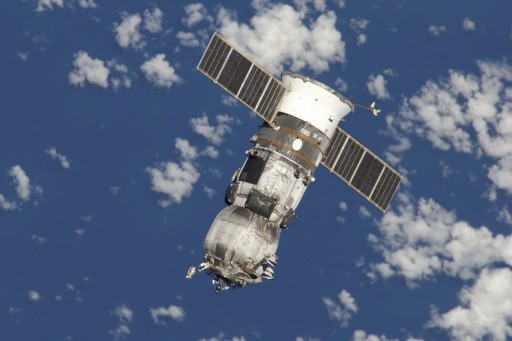
Progress MS-2, the second in the line of improved MS spacecraft, is set for liftoff on March 31 atop a Soyuz 2-1A rocket boosting the 7,200-Kilogram spacecraft to orbit in just under nine minutes. Due to favorable phasing, Progress MS-2 can enjoy a four-orbit rendezvous, arriving at ISS just six hours after launch for an automated docking to the aft port of the Station to mark the delivery of 2,500 Kilograms of cargo, propellant, water and pressurized gas.
Set for launch in late March, after months of delays, is the Dragon SpX-8 mission, marking the return to flight of the SpaceX Dragon spacecraft after suffering a launch failure in June 2015 due to a structural failure in the Helium pressurization system on the second stage of the Falcon 9 rocket.
For the first time rising atop the upgraded Full Thrust version of Falcon 9, Dragon will blast off from Space Launch Complex 40 at Cape Canaveral Air Force Station. Dragon will enjoy a ten-minute ascent, being released into a Low Earth Orbit from where it can begin its link-up with the Space Station through a series of orbit-raising maneuvers. The flight will include an attempt to return the first stage booster of the Falcon 9 rocket to Cape Canaveral for a landing on a concrete pad close to the launch site.
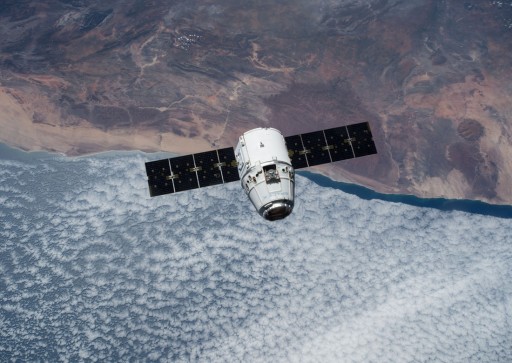
Arriving in orbit, Dragon will breathe fire, priming its propulsion system, unfolding its solar arrays and opening the GNC Bay door ahead of the first in a set of orbit adjustments that will take Dragon into a higher orbit, approaching the Space Station from below and behind. Dragon will make a methodical rendezvous including several hold points as it climbs up to ISS from a point straight below the orbiting complex. Once arriving at the Capture Point, the ISS crew controls the Station’s Robotic Arm, Canadarm2, to capture the vehicle and berth it to the Harmony Node of the Space Station.
When hatches to the Dragon are open, the crew can begin to unload the spacecraft that will be delivering a variety of equipment to ISS including science experiment hardware, crew supplies and maintenance equipment. Making its way to ISS in Dragon’s Trunk Section will be the Bigelow Expandable Activity Module, BEAM.
NASA started assessing the possibility of flying an expandable module to ISS in 2010 and conducted a number of meetings with Bigelow culminating in a two-day concept review in early 2011. Eventually, in December 2012, NASA signed a $17.8 million contract with Bigelow to develop the Bigelow Expandable Activity Module, BEAM with a launch date in 2015.
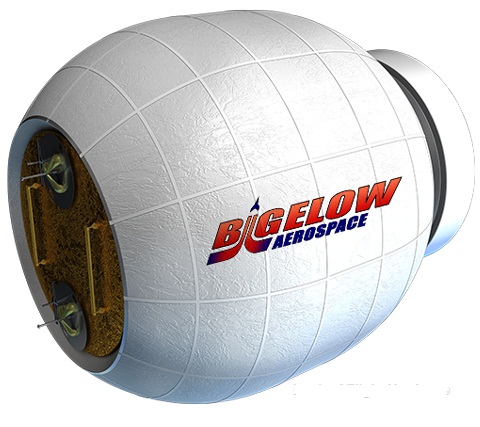
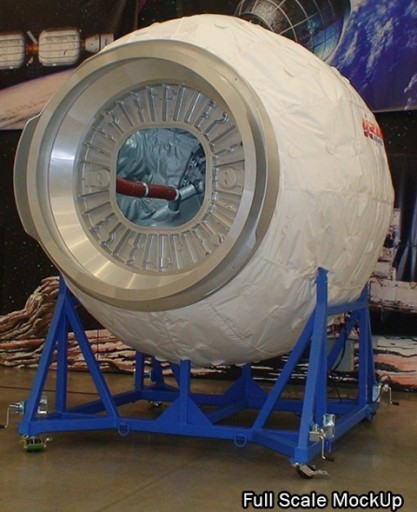
BEAM is similar, but not identical, in size and construction to the Genesis modules, however, it does not use solar panels and its expandable hull might consist of a different number of layers. One of the most significant changes to the module is the addition of a Common Berthing Mechanism that was manufactured by Sierra Nevada under a $2 million contract. The CBM is required to allow BEAM to be berthed to the International Space Station. Another feature is a rigid forward bulkhead that provides the mounting structure for two grapple fixtures for the Station’s robotic arm to allow the module to be handled in space.
Internal sensors include temperature and pressure sensors that are powered by batteries and require crew members to access the module to retrieve the data. Whether BEAM will actually be used for storage over the course of its two-year mission duration at ISS will likely be determined based on vehicle performance.
The deployed BEAM spacecraft has a mass of around 1,360 Kilograms and in its deployed configuration measures 4 meters in length and 3.2 meters in diameter with a living volume of 16 cubic meters.
BEAM is significantly smaller than the operational modules that are being developed by Bigelow for a number of commercial applications. BA330 is a full-scale habitation module using expandable technologies. Large enough to facilitate a crew of six, the module could build the basis of a modular Space Station consisting of several modules for use by commercial or private customers for either crewed or uncrewed missions with crewed flights requiring the procurement of a launch/landing spacecraft. The module will have a pressurized volume of 330 cubic meters, hence its numeric designation, measuring 6.7 meters in diameter and 13.7 meters in length with a launch mass of 20 metric tons. Bigelow hopes to have two BA330 modules ready for launch in 2018, being manufactured at a production facility opened in 2011. An even larger module, BA2100, envisioned for use as an interplanetary transport spacecraft has been proposed by Bigelow.
Dragon is set for a three-week stay at ISS, marking the first time Cygnus and Dragon are berthed to ISS simultaneously with Cygnus residing on the Node 1 berthing port and Dragon enjoying a stay berthed to Node 2, both spacecraft facing towards Earth. SpX-8 is first to depart, followed in early May by the Cygnus OA-6 spacecraft. While Dragon parachutes to a safe landing in the Pacific Ocean to return science experiments from ISS, Cygnus will take out the trash and burn up over a remote stretch of the Pacific to close out its mission.
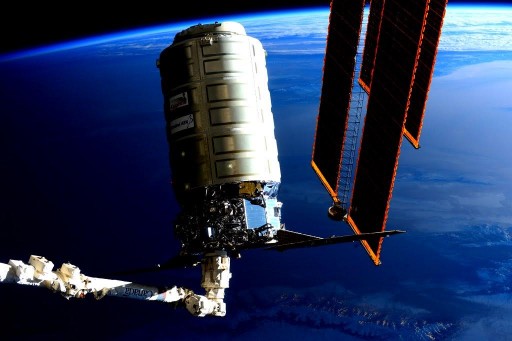
Depending on schedules, Cygnus may make a second flight during Expedition 47, this time under the OA-5 mission designation – the spacecraft’s first flight on the upgraded Antares 230 launch vehicle, sporting new engines.
In its original 100 series, Antares was outfitted with a pair of AJ-26 engines which are NK-33 engines developed and built in the 1970s and imported to the U.S. to undergo modifications. In the October 2014 launch of Cygnus Orb-3, Antares suffered a catastrophic engine failure just seconds after leaving the ground, resulting in the 41-meter tall rocket falling to the ground close to its launch pad and exploding in a ball of fire.
An inquiry in the exact circumstances of the failure revealed the most probable cause of the failure to be related to the one of the engines, most likely arising from a manufacturing defect introduced when the NK-33 engine was built over 40 years ago. Because of the limited supply of existing NK-33 engines, Orbital ATK (formerly Orbital Sciences) had already been looking into options of re-fitting Antares with newer engines and decided to accelerate this process after the failure to abandon the AJ-26 engines altogether and only fly Antares with newly produced engines.
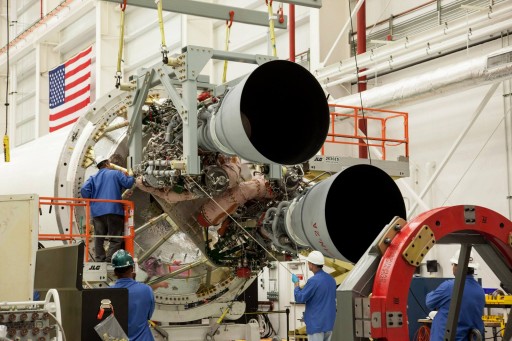
Orbital ATK chose the RD-181 engines manufactured by Russian engine builder NPO Energomash. The RD-181 is a one-chamber version of the RD-180 two-chamber engine used by the Atlas V rocket which itself is a smaller version of the RD-170/171 four-chamber engine originally flown by the Energia booster and now flying on the Zenit rocket.
In 2015, the Antares launch pad at the Wallops Flight Facility finished repairs and Orbital ATK completed the installation of RD-181 engines on the launcher. Testing to be completed prior to the first flight of the improved Antares will include tanking tests, also serving as an exercise of the repaired ground support systems.
Liftoff is currently expected in late May, but whether this schedule will hold remains to be seen and will depend on the results of ground systems and launch vehicle testing at Wallops. Cygnus would stay at ISS for around six weeks before departing during Expedition 48.
ISS Expedition 47 is expected to conclude on June 5, 2016 with the departure of Soyuz TMA-19M to return to Earth with Yuri Malenchenko, Tim Kopra and Tim Peake after a seven-month mission to the International Space Station.
Spacewalks
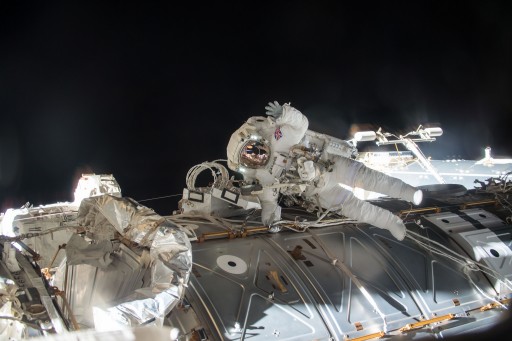
The Spacewalk schedule for Increment 47 is relatively uncertain and will depend on the overall scheduling of visiting vehicle activities. No Russian EVAs are planned until the summer time frame and the primary driver for USOS spacewalks is the arrival of the first International Docking Adapter to be installed on Pressurized Mating Adapter 2 to establish the first docking port for upcoming commercial crew traffic.
IDA-2 is riding to ISS aboard the Dragon SpX-9 mission, currently looking at a summer liftoff. A pair of EVAs is needed to finish outfitting PMA-2 and integrate the docking adapter and all associated power and data connections.
The Extravehicular Mobility Units are in storage inside the Quest Airlock, are being maintained by the crew to keep them in operating condition and ready for an unplanned EVA – even on very short notice. The Russian Orlan suits are also ready for use in case they are needed.
International Docking Adapter Background:
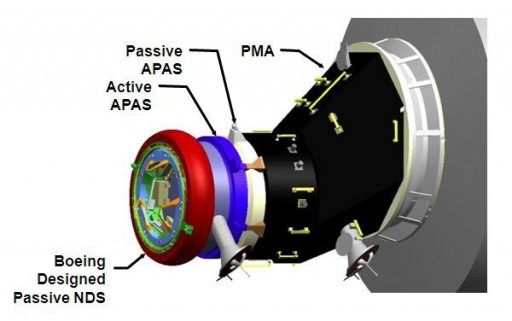
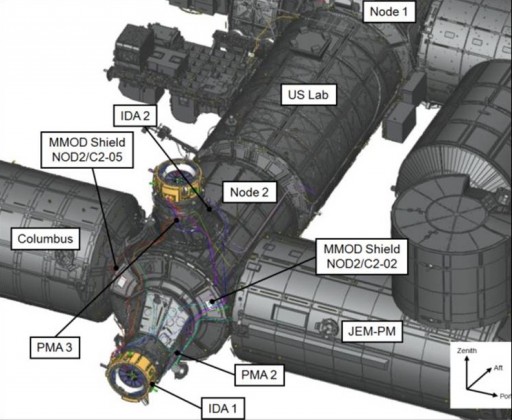
The International Docking Adapters (IDAs) will be installed on Pressurized Mating Adapters 2 and 3 to convert the APAS-95 docking interface used by the Space Shuttle to the NASA Docking System that is compatible with the International Docking System Standard.
The IDAs are compatible with the NASA Docking System which is an androgynous design supporting low-impact technology. Automated and piloted Spacecraft docking and robotic spacecraft berthing will be possible with the NDS. The docking interface includes architecture to transfer data and power between the two vehicles with future systems also capable of propellant, pressurant and water transfers. The hatch diameter available to crews is 80 centimeters.
For a docking, one interface is in active mode with its Soft Capture System extended while the other spacecraft is in a passive role with its SCS in a stowed position.
The Docking System includes a Soft Capture System that forms the initial connection between the spacecraft before pulling the two docking systems together to allow the Hard Capture System to form a rigid seal between the two spacecraft. Hooks are available on the active and passive side of the docking system, providing up to 24 attachment points. Overall, the system consists of a capture ring, guide petals, soft docking magnets, mechanical latches, magnetic striker plates, latch strikers and sensor strikers. The strikers are part of the passive system and provide contact surfaces for components of the active system. Soft capture can be achieved using magnetic or mechanical soft capture latches.
The first elements to make contact are the guide petals that then correct any lateral or angular misalignment between the docking interfaces with soft capture being achieved either through magnets making contact with the striker plates on the opposing ring or through active latches that capture passive latch strikers to from a soft-mate. The SCS then aligns the two docking rings and through the retraction of SCS, the two Hard Capture Interfaces are positioned within their hard capture range to allow fine alignment by the HCS guide pins. Hooks are then used on either the active, passive or both sides to establish the structural connection between the spacecraft and achieving the required force to press the seals within the docking system against the other spacecraft. Each side includes 12 hooks – the passive and active hooks can both be closed if dictated by vehicle requirements.
Due to the low force required for a Soft Capture, the NDS can support robotic berthing of a spacecraft.
To prepare for commercial crew, PMA-3 will be moved from Node-3 to Node-2 Zenith in July or August to be ready to welcome ISS visiting vehicles
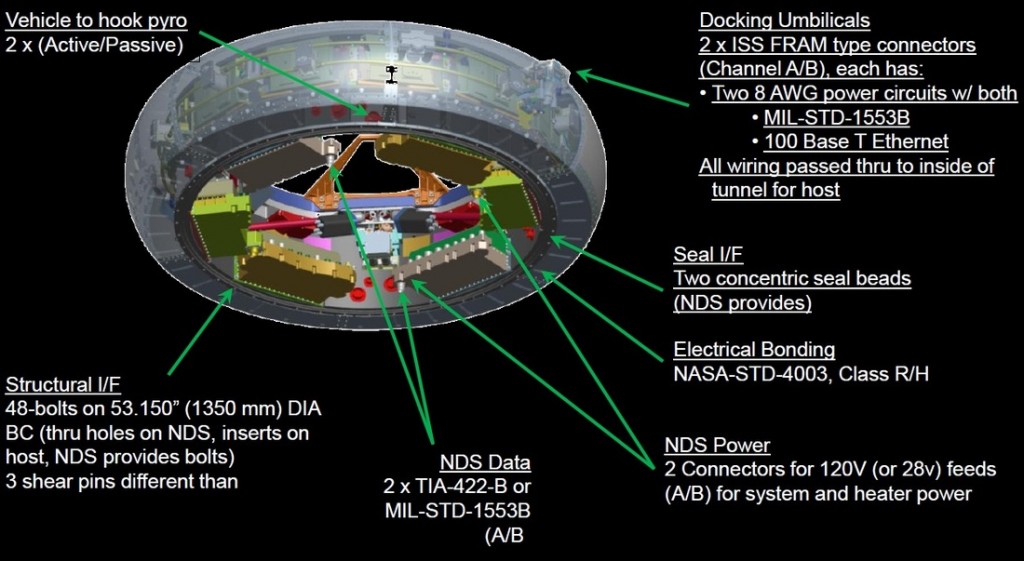
Expedition 47 – Science Overview
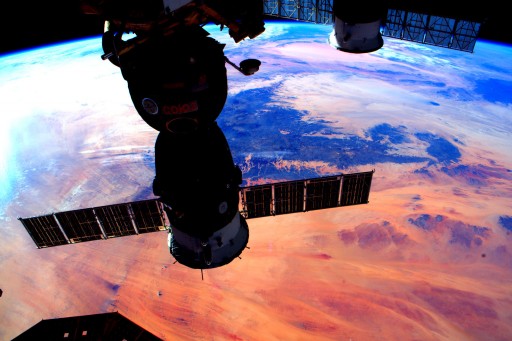
Continuing in its full utilization phase, ISS will feature a packed science schedule for the Expedition 47 crew who will be spending over 40 hours per week with the ongoing scientific research aboard the orbiting laboratory. Overall, ISS Expedition 46/47 will see more than 250 studies performed aboard the Space Station including around 50 Russian experiments.
A number of new experiments will be inaugurated as part of Expedition 46/47.
The Packed Bed Reactor Experiment (PBRE) studies the behavior of gaseous and liquid media when flowing simultaneously through a column filled with a porous substance. This porous media, the packing of the column, can be of different shapes and materials depending on its purpose which generally is to enhance the contact between the two immiscible fluid phases that are flowing through the column. On Earth packed columns are used in a wide variety of applications such as reactors, scrubbers, strippers and many more.
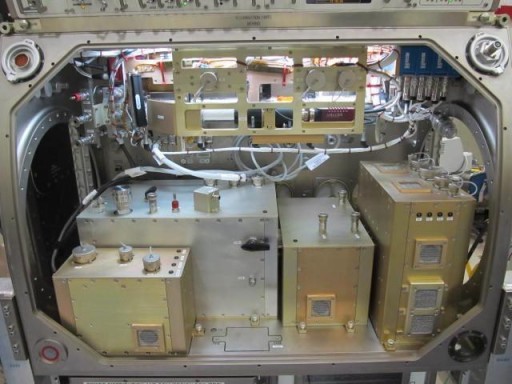
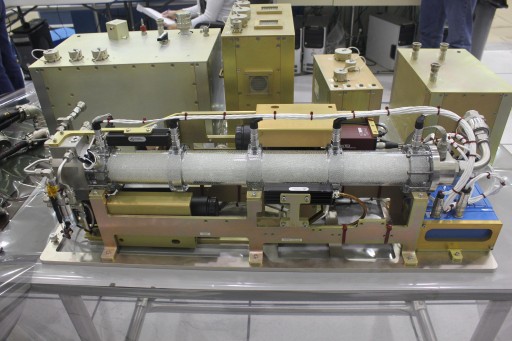
There are no design methodologies for two-phase flow in packed columns in microgravity meaning that two-phase flow equipment can not be optimally designed for in-space applications which means current hardware likely is of excess weight, consumes unnecessary energy and has a reduced efficiency and operational life time. Therefore, experimentation is needed to understand the two-phase dynamics occurring in different packings in the space environment to learn lessons for the design of future systems that need to be more efficient.
Current in-space systems where two-phase flows occur include life support systems, thermal control systems, fuel cells, in-situ resources, heat pipes, materials processing, production of pharmaceutical-grade water and the transport of nutrients within soils. Fixed Packed Bed Reactors are currently in use in a number of systems aboard the International Space Station including operational and science facilities. NASA is also designing similar systems for application on future spacecraft, but all without a complete knowledge of flow dynamics in microgravity.
The expected return from PBRE will be a set of tools and guidelines to be used by engineers to develop reliable reactors for microgravity as well as the reduced gravity environments of Moon and Mars. Initial testing on microgravity flights showed that the liquid hold-up within packed columns is significantly influenced by gravity, however, typical column systems require several minutes to fully develop which is well beyond the duration of a microgravity flight – requiring a test architecture to be established on the space-based platform for an empirical investigation of column flow dynamics in microgravity. The PBRE study will focus on transitions between flow regimes and associated pressure gradients in the different packing material types.
The PBRE experiment rig is mostly operated from the ground and includes the various fluid reservoirs, the column, pumping equipment and instrumentation. Delivered as part of the data stream from the instrument are the gas and liquid flow rates, test section temperature and pressure and an NTSC video feed to document the progress of the experiment. PBRE is operated within the Microgravity Science Glovebox
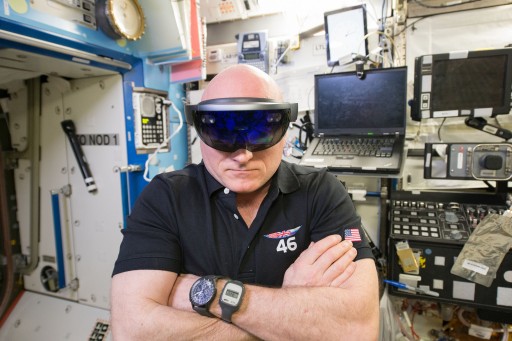
The new SideKick Project makes use of Microsoft HoloLens devices to introduce commercial technology to assist crew members in orbit.
n use on ISS, the Sidekick hardware can be operated in Remote Expert Mode in which Skype is used to allow a ground engineer to see that the crew member sees which could ease real-time guidance when completing complex tasks including those for which no prior training on the ground was conducted. Also, ground team members could draw annotations into the crew member’s environment to help complete a task. In Procedure Mode, animated holographic illustrations can be displaced on top of objects a crew member is handling in order to lessen the amount of training future crews will require. This type of application could be of tremendous use in missions to more distant targets when communication delays complicate real-time ground support.
Sidekick was evaluated as part of zero gravity flights and underwater during the NASA Extreme Environment Mission Operations (NEEMO) 20 expedition.
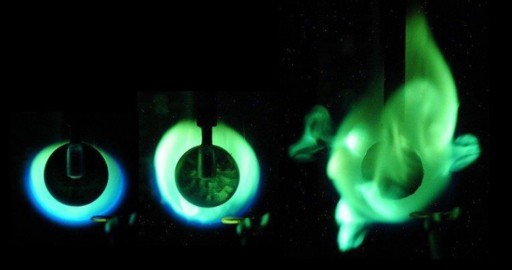
BASS-M stands for Burning and Suppression of Solids – Milliken and is part of a series of BASS experiments that investigate how solid materials burn without the presence of gravity which is of use in physics but also in spacecraft engineering and fire protection. The BASS-M experiment looks at flame-retardant cotton fabrics to determine how well they resist burning in microgravity. This can be used in the development of flame-retardant textiles for use on Earth and in space.
The BASS-M experiment will put the hypothesis that materials in microgravity burn as well (if not better) than in normal gravity to the test given identical environmental parameters (pressure, oxygen concentration, temperature).
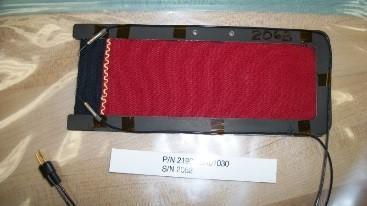
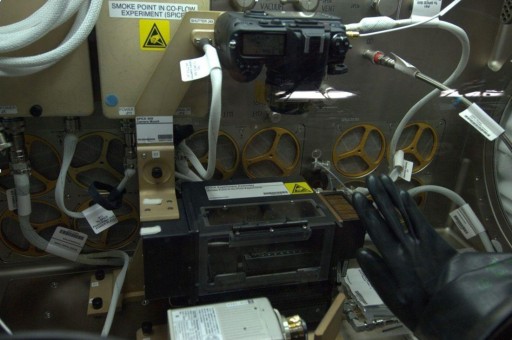
Also, different air flow rates will be employed to resemble forced convection in microgravity or free fall conditions on Earth. A total of ten differently treated textiles will be tested and each textile’s ability to self-extinguish will be compared against tests conducted on the ground. BASS uses an upward burning test which mimics the worst-case geometry for flammability on Earth which also allows for a comparison of upward burning on Earth and in space.
BASS-M delivers to ISS 44 textile samples already integrated with igniter wires – four samples of 11 different sample types, one being an untreated control. Each sample consists of a small portion of untreated textile that interfaces with the igniter to provide a start-point for the burning process so that the flames of the untreated sample directly impinge on the treated portion of the textile.
A high speed camera will capture the burning process and sensors will be used to keep track of the burning process, flame shape, flow speed, flame spread rate and flame dynamics such as oscillations and pulsations. The critical observations for the extinction are flame dynamics just prior to extinction for incorporation in models.
BASS-M uses BASS and SPICE (Smoke Point In Co-flow Experiment) hardware set up in the Microgravity Science Glovebox. Hosted within the assembly is a fan and an anemometer to measure the flow rate which can be adjusted between 5 and 50 centimeters per second. A radiometer quantitatively measures the flame output. Each test is expected to take around one minute from ignition to full extinction.
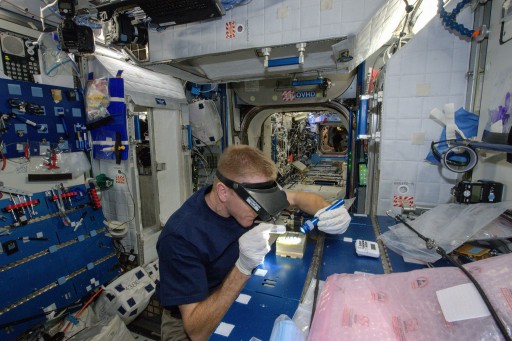
In addition to a number of new studies, Expedition 47 will continue numerous experiments that started during previous increments. ISS Science spans across all fields of science with particular focus on Earth and Space Science, Physical Science, Technology, Biology and Biotechnology, Human Research and Educational and Cultural Activities.
The crew will be supporting hundreds of scientific studies and experiments that are in progress aboard the Station – often acting as test subjects themselves performing different experiments to study the effects long duration space flight has on humans.
A human physiology study that will keep the crew busy many days of their mission is Ocular Health. Its full name is Prospective Observational Study of Ocular Health in ISS Crews. The Prospective Observational Study of Ocular Health in ISS Crews (Ocular Health) protocol aims to systematically gather physiological data to characterize the Risk of Microgravity-Induced Visual Impairment/Intracranial Pressure on crewmembers assigned to a 6 month ISS increment,” the NASA experiment overview said.
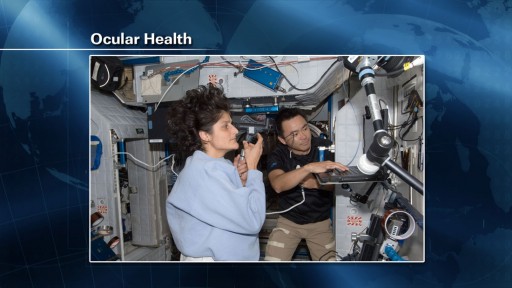
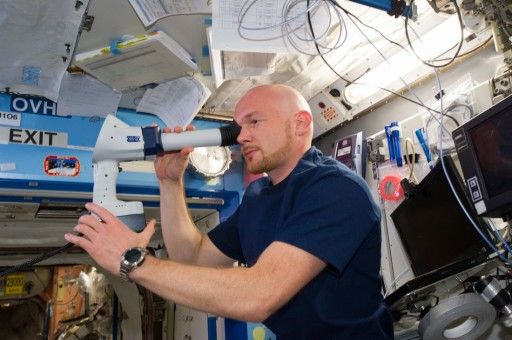
It is known that some (not all) astronauts in orbit experience changes in visual acuity (visual clarity) and intraocular pressure as a result of fluid shifts within the body as it is subjected to microgravity. About 20% is astronauts flying to ISS have reported these kinds of changes. Test subjects will undergo pre-flight, flight and post-flight testing of their eyes using a variety of techniques.
Near and far visual acuity will be tested for each eye independently using a Snellen chart and Amsler grid testing. Also, intraocular and blood pressure measurements are part of the study as well as ocular ultrasounds to identify changes in globe morphology, fundoscopy to detect retinal changes, threshold visual field testing to assess central and peripheral vision changes, contrast sensitivity changes as a measure of visual function, and vascular compliance calculations. In-flight measures will be taken on Flight Days 10, 30, 60, 90, and 120 as well as 30 days prior to return.
Pre- and post-flight examinations include refraction testing, pupil reflex testing, extraocular muscle balance and function checks, CT and MRI scans and split lamp biochemistry and high resolution retinal photography.
“The purpose of this study is to collect evidence to characterize the risk and define the visual changes and central nervous system (CNS) changes observed during a six month exposure to microgravity including postflight time course for recovery to baseline. This study will gather information that can be used to assess the risk of Microgravity-Induced Visual Impairment/Intracranial Pressure (VIIP) and guide future research needs,” the experiment overview notes.
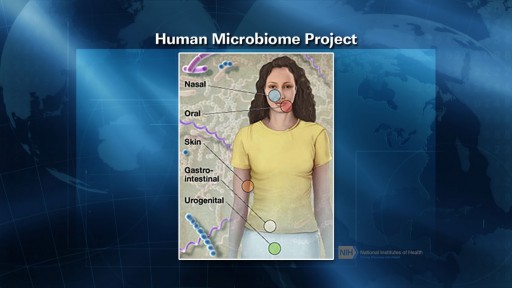
A study that began during Expedition 35/36 is called Microbiome with its full name: Study of the Impact of Long-Term Space Travel on the Astronauts’ Microbiome. The study will investigate the impact of long duration space flight on both, the human immune system and an individual’s microbiome. The microbiome is the totality of microbes that live in and on the human body at any given time and influence human physiology. Some consider the microbiome to be a “newly discovered organ” due to its importance for human physiology. In fact, there are about 10 times more microbial cells than human cells in and on the human body, but the microbiome only accounts for about 200 grams.
The study involves extensive sample collection from subjects. Crew members will undergo sampling before, during and after their flight to ISS. Samples include nasal and oral samples, skin swabs and optional gastrointestinal samples. These will be taken from a total of nine astronauts before flight, around flight day 7 and 90 and at return minus 14 days as well as post flight. In addition, ISS surface samples are taken to better understand the microbial environment the crew members are subjected to.
ISS surface swabs will be collected from the crewmember’s sleeping quarters, exercise equipment, handheld microphone, Cupola knob, and two air vents located within frequently used ISS modules using a swabbing device. In addition, drinking water is sampled. Also, the crew member’s take saliva and blood samples to determine cortisol levels as well as cytokines for stress level analysis. Finally, crew members complete Environmental Health and Hygiene surveys to obtain metadata including astronaut health and hygiene.
Data from the microbiome investigation will help determine the effect that long duration space flight has on the crew member’s microbiome which in turn affects general health, immune response and overall physiology of the individual. For future long duration missions beyond Earth orbit, knowledge about these physiological effects is required to keep the crew members in optimal condition.
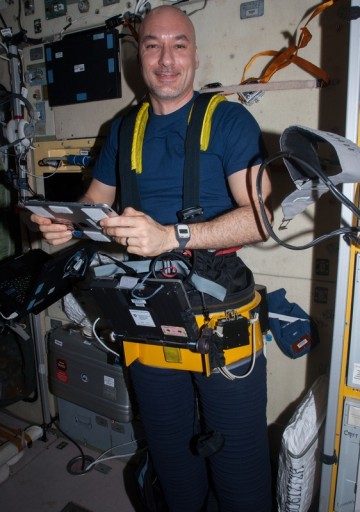
Fluid Shifts Before, During and After Prolonged Space Flight and Their Association with Intracranial Pressure and Visual Impairment. Known as the Fluids Shift study, this experiment is one of the most complex integrated experiments ever performed on ISS using pieces of US and Russian hardware to attempt to quantify the amount of fluid shifting from the lower body to the upper body when transitioning from a gravity to a microgravity environment.
This will also lead to an understanding of effects of the fluid shift on fluid pressure in the head, changes to vision and eye structure. Effects on the eye caused by elevated intracranial pressure include globe flattening, choroidal folds, and alteration of the optic nerve.
The fluid shifts study uses a number of measurements – fluid compartmentalization (determining total body water by using heavy water as tracer, determining extra and intracellular water content, plasma volume & interstitial volume), ultrasound measurements to track the thickness of tissues on the forehead, tibia, calcaneus, ultrasounds to measure vascular dimensions, MRI for the measurement of vascular dynamics, ocular measurements (optical coherence tomography, tonometry, ultrasounds for structural changes), cardiac variables using ultrasounds, and intracranial pressure measurements.
The study will utilize the Russian Chibis Lower Body Negative Pressure suit that shifts fluids back to the lower body to provide comparison measurements with those made in pure microgravity and on Earth.
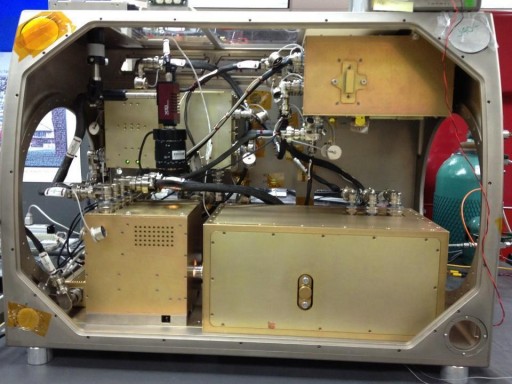
“Observation and Analysis of Smectic Islands in Space” will study the unique behavior of liquid crystals in microgravity with special focus on their overall motion and merging of crystal layers which is known as the formation of smectic islands. Liquid crystals are widely used in technology, being employed in LCD TV screens, laptop screens, watches and other electronics with flat panel displays. The also find use in soaps and membranes. Studying liquid crystals in microgravity will provide new insights into two dimensional system physics of complex fluids. Findings may lead to understanding of well aligned, very high speed electro-optic devices that could find use in embedded ferroelectric liquid crystal micro-displays.
The experiment assembly consists of a bubble chamber that is filled with medium, air jet injectors, ink injectors, LED lights and a camera assembly that monitors the activity inside the chamber. This setup will be used to study the various aspects of fluid crystal behavior in space – looking at overall fluid motion, diffusion, and the merging of crystal film layers.
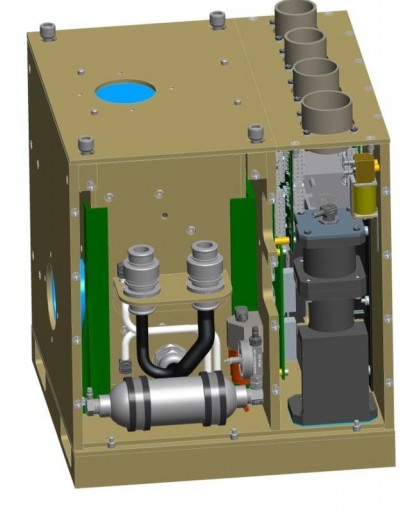
The experiment allows for a detailed study of complex fluid physics behavior in two dimensional fluids using freely suspended liquid crystals, focused on hydrodynamic flow, on relaxation of hydrodynamic perturbations, and on hydrodynamic interactions in two dimensions.
Precision studies of 2D hydrodynamics is possible in microgravity by using freely suspended bubbles without islands, convection, and sedimentation which represent nearly ideally homogenous (physical & chemical) systems. The introduction of islands / droplets in this system is recorded as controllable inclusions that modify flow and as markers of flow in the system. The experiment also looks at thermocapillarity of 2D fluids and collective systems of layer step interfaces on bubble surfaces.
The new Haptics-1 hardware includes a single degree of freedom high-resolution force control joystick to be used in physiology research in zero-G with a technical element as this setup can find application in future space-telerobotics technology. The experiment will study how remote-controlled robot operation from space (telerobotics) can be accomplished with special focus on providing a haptic feedback to the controller in the form of force on the control device. This requires detailed knowledge on the effects of microgravity on force perception and motor control capability which has not been studied before.
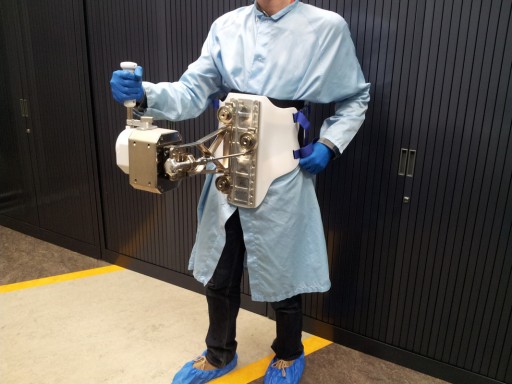
The experiment hardware consists of a joystick that uses a highly power-dense brushless direct-current actuator, an EtherCAT motor controller, custom-built force and torque sensors and flight computer using Commercial off-the-shelf components. The Haptics-1 joystick is mounted via standard space station interfaces to a body harness.
Haptic feedback is extremely important for future telerobotics performed from space as it provides the controller with guidance as to how much force needs to be applied to complete a given job. This is already used on Earth, but for application in space, the examination of haptic feedback perception in astronauts in zero-G is necessary.
As part of experiment sessions, the astronaut can push and pull the joystick to complete simulated tasks that involve haptic feedback provided by the system that can produce minute forces that will be hard for most people to notice up to considerable resistance.
A total of seven different experiments are planned with the payload, although more can be easily uploaded to the instrument computer. The instrument is controlled via a touchscreen that builds the primary interface to the crew member.
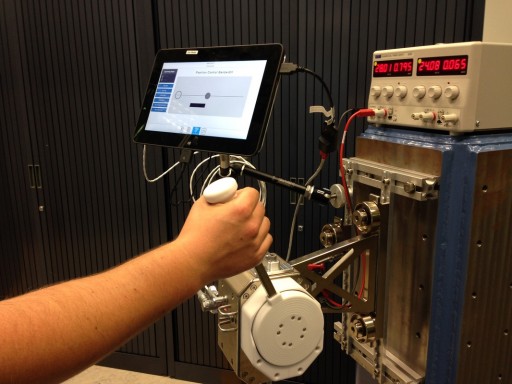
For the experiment, crew members will be playing the computer game Pong – moving a bar on the side of the screen as precisely as possible under different feedback settings. Each experiment is accompanied by questionnaires that evaluate the smallest feedback a crew member could feel and how realistic the different settings feel. The experiments will be conducted at different points in the crew member’s mission to determine the effect of the mission duration on human motor control in microgravity.
The Haptics-1 experiment explores uncharted territory as it will answer the question whether the human body will be more sensitive to forces in space and how force perception changes over time during exposure to zero-G.
Telerobotics are expected to come into play in the future when astronauts control robots performing spacewalks on the exterior of spacecraft or telerobotically control rovers on Mars or an asteroid from a spacecraft in orbit.
Expedition 46/47 will also see several experiment sessions using the two SPHERES satellites that are used as testbed inside the Station. SPHERES can be modified using different systems to perform a range of experiments, for example RINGS and Zero Robotics.
SPHERES stands for Synchronized Position Hold, Engage, Reorient, Experimental Satellites and involves two satellites that are used inside the space station to provide a miniature testbed to study maneuvering capabilities and spacecraft measurement systems.
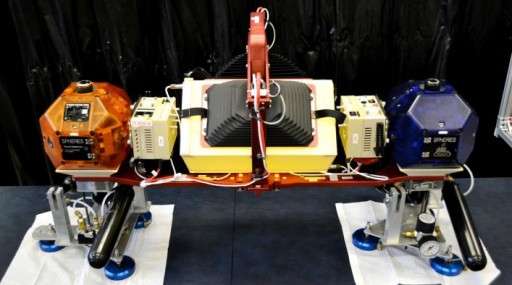
These two small satellites are used to study maneuvers in space in miniature inside the ISS.
The Slosh experiment investigates how liquids move around inside containers in microgravity. The physics of liquid motion in space are not well understood. A good understanding of the processes at work would improve modeling of the behavior of rocket fuel inside the tanks of satellites and other spacecraft or rockets. Computer models that exist have not been checked against actual experimental data acquired which is what this experiment will accomplish.
To conduct the experiment, the two SPHERES are attached to the assembled experiment hardware and the system is put through a series of maneuvers via the SPHERES satellites. Collected data will be downlinked for analysis.
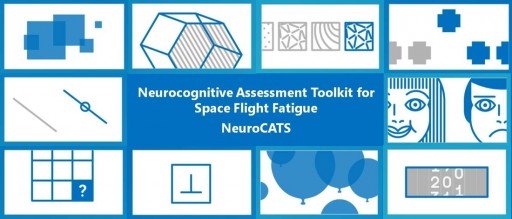
Cognition, also known as Individualized Real-Time Neurocognitive Assessment Toolkit for Space Flight Fatigue uses a battery of tests to measure how spaceflight-related physical changes (microgravity, lack of sleep quality, diet) can affect the cognitive performance of humans during long-duration space flights. The experiment consists of ten brief computer-based tests that cover a range of cognitive functions and deliver immediate feedback on current and past results. A good neurocognitive function for effective performance during space missions makes an investigation of sleep and fatigue in space an absolute necessity.
The testing operation consists of a sleep questionnaire and subjective evaluations at the beginning followed by the ten tests that focus on: sensor-motor ability, visual object learning and memory, attention and working memory, abstraction, spatial orientation, emotion recognition, abstract reasoning, complex scanning & visual tracking, risk decision making, and vigilant attention and psychomotor speed.
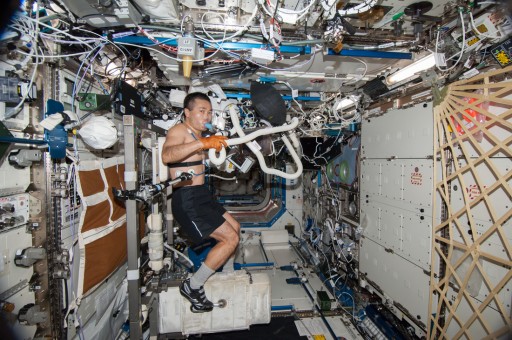
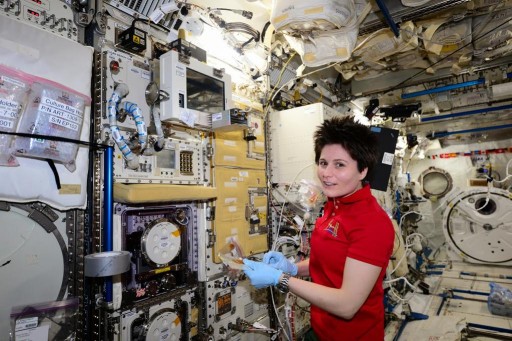
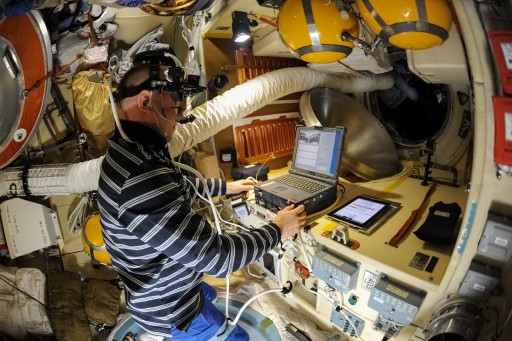
The European Space Agency will also continue operations of its Circadian Rhythms Study that will examine the role of synchronized circadian rhythms and possible maintenance during long-duration spaceflight and addresses the impacts to crew members’ health and wellbeing. Understanding how the dark/light cycle and sleep shifting affects circadian rhythms and with that the performance of the crew members will enable scientists to develop new sleep shifting techniques for crew members in space and shift workers on Earth.
The SPINAL study involves ultrasound scanning of the crew member’s spine over the course of their flight to assess the extent and impact of spinal elongation in crew members undergoing long duration space flight. Scans are performed 30, 90 and 150 days into a crew member’s mission. “Ultrasound images will focus on the cervical and lumbar areas of the spine and surrounding tissues. The test subjects will also undergo pre- and post-flight ultrasound and MRI scans on Earth to provide baseline data,” NASA said in a statement. The SPINAL study also seeks to advance medical imaging techniques for application on Earth.
Many other long term ISS Research projects will continue on Expedition 46/47 including many human research experiments focused on the effects of long duration flights on the human body. These tests include cardiovascular studies, studies of metabolism properties, etc. For that, the Astronauts will take regular tests (e.g. vision checks, electrocardiography) and give samples (Blood, Saliva, Urine) that will be returned to Earth for analysis.
On the Russian side, there are also a number of science operations that will be underway throughout Expedition 47. These experiments include material science, biology, human research, earth observation and physics&chemistry.
The new Biopolimer Experiment seeks to help in the development of new polymeric materials resistant to biocorrosion. The experiment uses a series of test specimens in sealed film packets also containing polymeric materials. After exposing the containers to microgravity for a specified amount of time, the hardware will return to Earth for analysis to determine the resistance of the different materials to biocorrosion in spaceflight conditions for future application in spacecraft construction.
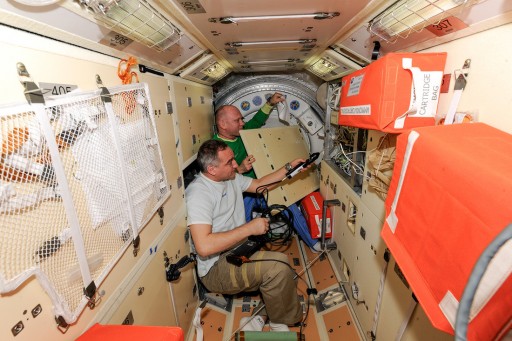
Matryoshka-R consists of a number of radiation dosimeters that are set up inside the space station to assess radiation exposure of the crew relative to ISS position in its orbit and shielding provided by the modules.
Obstanovka (=Environment) features external hardware including a set of magnetometers, wave sensors, potential probes, plasma discharge stimulators, an electron spectrograph and other components to study space weather. Obstanovka will study electromagnetic fields and plasma-wave processes occurring in the ISS Near Surface Zone to examine plasma component factors in near-Earth space. “The problems concerning the interaction of such super-large body as the International Space Station (ISS) with space plasma are of the top-priority importance for both technological and scientific experiments aboard the ISS,” the RSC Energia Experiment Overview document said.
Seismoprognoz will measure the temporal and spatial scales of ionospheric disturbances caused by seismic phenomena in order to develop algorithms to detect plasma features of earthquakes and anthropogenic impacts from space-based instruments. The payload consists of an external monoblock, a Data Control and Acquisition Module, an attachment kit, flash memory and associated cables and connectors.
‘Vzaimodeistviye’ (Interactions) looks at psychological aspects of long duration space flight during which different cultures come together aboard a Spacecraft such as ISS and seeks to improve crew interactions aboard ISS and with teams on the ground.
Relaxation is an Earth Observation Experiment that uses the Photospectral Hardware to acquire spectral and photographic imagery of Earth’s surface and atmosphere under ground commanding.
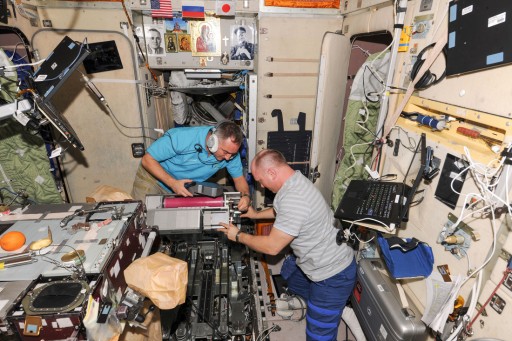
The PZEh-MO-8 Body Mass Study tracks a crew member’s body mass during their stay in microgravity which allows to examine the effects of diet and exercise in space. Measuring body mass in Zero-G, where matter is weightless, but not massless, is accomplished by measuring the inertial forces that arise during the oscillatory motion of a mass driven by two helical metering springs with known spring constants.
By logging the period of each oscillation of the crew member and comparing it to the period of a known mass, the unknown mass can be calculated.
Zero-G deconditioning is also being tracked by the MO-7 study that measures a crew member’s Calf Volume. These measurements are done with the IZOG device which is a custom-sewn fabric cuff that fits over the calf. The knee and lower foot of the left leg are used as reference points. The measurements provide a rough index of deconditioning in Zero-G and can be used to assess countermeasures.
The Russian MedOps Suite of investigations assesses crew health and other physiological changes occurring during long duration space missions by collecting samples of blood, saliva and urine of participants.
